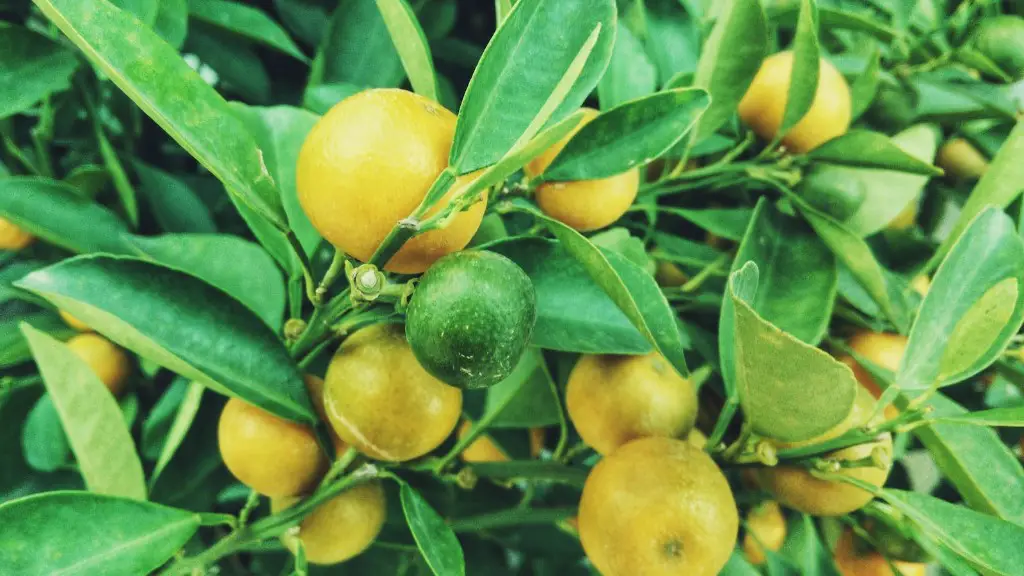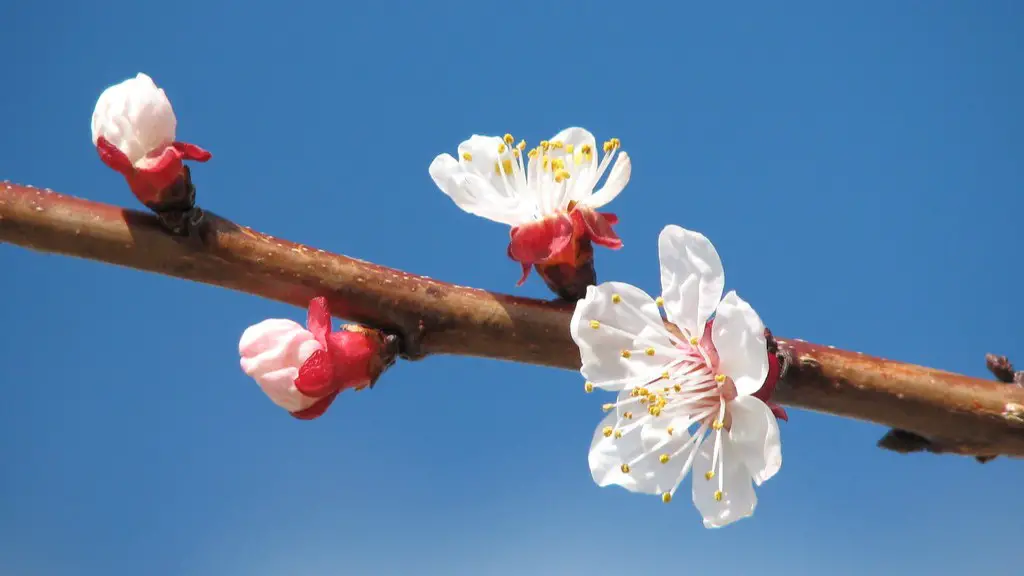Pruning a Japanese cherry tree is an art form. It is a skill that requires patience and practice to perfect. Japanese cherry trees are prized for their striking visual beauty, with the popular form of the tree shaped like an umbrella with a central trunk and several stems radiating outwardly. Pruning a Japanese cherry tree requires careful attention to maintaining its natural form while providing the opportunity to guide it into a more visually striking one.
Whether you are a professional gardener or a home cultivator, pruning a Japanese cherry tree is both a science and an art. Japanese cherry trees prefer to be pruned between late winter and early spring. This is because the cherry tree needs to be awakened from its dormancy and ready to burst into life when the temperature begins to rise.
When early spring arrives, the first step in successful pruning is to identify dead, diseased, and crossing branches, and to remove them. It is important to locate and prune any suckers growing near the base of the tree. These are branches that are growing directly from the base of the tree and can be easily plucked off by hand. Pruning should also be done to improve the tree’s overall shape. A Japanese cherry tree looks best with a central leader, meaning that one thick main branch should be chosen to provide an upwards rising vertical trunk. Pruning should be concentrated around the main branch to create an even balance of growth from all sides. This helps to create the perfect umbrella shape sought after by many gardeners.
It is important to bear in mind that pruning should never be taken to extremes. An excessively pruned cherry tree will not look its best and could become a less healthy plant. Professional experts advise that it is best to keep pruning to no more than a third to a half of the total foliage mass. The goal should never be to reduce the foliage to a ‘broomstick’ like shape, but rather to shape the tree and influence its growth.
The final step in pruning a Japanese cherry tree is to restore it to health. This step requires careful attention as any wounding done to the tree can potentially leave it vulnerable to disease. Special attention should be paid to carefully removing dead and diseased branches, leaving no jagged edges or sharp points. Special care should also be taken to not leave any pruned branches hanging down near the ground since they can potentially become a hazardous climbing challenge for small children.
Pruning a Japanese cherry tree is a delicate affair, requiring patience, skill and a good dose of common sense. With proper pruning, the beautiful umbrella-shaped cherry tree will be your garden’s masterpiece.
Pruning Tools
Pruning a Japanese cherry tree is best done using the proper tools. A pair of hand pruners or shears, long pole pruners, and bypass hand pruners are the best tools for the job. Hand pruners or shears are ideal for reaching into the interior of the tree to remove smaller shoots, while bypass hand pruners are better suited to reach outside branches.
Long-handled pole pruners are an invaluable tool both for higher branches on Japanese cherry trees and for obtaining an overall view of the tree’s structure before the pruning begins. It is important to note that pole pruners should always be used with extreme caution, especially when extremely high branches need trimming.
When it comes to selecting pruning tools, it is important to purchase high quality ones with sharp blades and comfortable handles that will not slip during use. Pruning tools must be regularly maintained and razor sharp for the best results.
Avoid Over Pruning
Pruning too much branches, or pruning too severely, can damage the tree and cause dieback and weakened new growth. It is generally best to prune lightly. Start by removing about a third of the healthy foliage and see how the tree responds by examining the new spring growth. If the tree seems to be responding well, additional pruning can be done if desired. The important thing is to prune gradually over a period of several years as opposed to making drastic cuts all at once.
When pruning, it is important to take note of the branch collar, which is the slightly raised area where the branch is attached to the trunk. Pruning correctly will preserve the branch collar and that encourages healing of the pruning wound. Pruning too close to the branch collar will remove the area needed for healing, thus opening the tree to greater risk of disease.
Finally, it’s important to keep in mind that the Japanese cherry tree should be regularly checked and inspected for any potential damage caused by storms, heavy winds, snow or ice. These natural disasters can cause major damage to a cherry tree and proper maintenance will help to avoid further damage.
Fertilizing After Pruning
After pruning, it is important to fertilize the cherry tree. Fertilizing helps to improve soil conditions and restore nutrients that were lost during pruning. A balanced fertilizer – one containing nitrogen, phosphate, and potassium – is best for the cherry tree. Fertilizer can be applied in a variety of ways, such as directly on the soil or using a sprayer. Be sure to follow the directions on the fertilizer packaging.
Fertilizing should be done in the late winter, with a second application done in the early summer. It is important to note that fertilizer should never be applied to a dry tree, as this can cause damage to the roots and leaves.
Finally, watering around a tree after pruning and fertilizing will help to rehydrate the tree and improve its overall health. Deep, but infrequent watering is preferred over frequent shallow watering.
Insects and Disease Control
After pruning and fertilizing, it is important to inspect the tree for any signs of pests or diseases. Japanese cherry trees can be infested with several common insects, such as aphids, scale, mealybugs, and spider mites. Proper pruning and fertilizing can help to reduce the presence of these pests, but it is best to take further action if they are present.
Common diseases that affect Japanese cherry trees include black spot, leaf spot and powdery mildew. These can usually be controlled by carefully pruning away affected branches and applying a fungicide. Again, it is important to closely follow instructions when applying fungicides or insecticides in order to avoid causing further damage to the tree.
Finally, it is important to keep in mind that unlike pruning, a tree’s health will not return instantaneously after being treated for insects or diseases. It may take up to several weeks for the tree to fully recover.
Protecting the Tree from Winter Weather
In order to help protect a Japanese cherry tree from extreme winter weather, it is important to periodically prune, fertilize and water the tree throughout the season. Pruning should be done regularly, removing dead, diseased, and crossing branches throughout the year. In addition, it is important to periodically fertilize and water the tree so that it will be healthy enough to withstand extreme weather.
Japanese cherry tree branches are also susceptible to freezing and breaking off in cold weather. To prevent this, it is important to keep the tree adequately watered and to protect the vulnerable branches by wrapping them with burlap or insulating material.
When dealing with snow loads atop the tree, it is best to use a broom and brush away the snow from the lower branches so that it does not cause the branches to break. It is also important to inspect and loosen any snow or ice that has accumulated on the tree, as this can cause serious structural damage or even uprooting in extreme cases.
Remove Falling Branches Promptly
Oftentimes during heavy rains and strong winds, branches from a Japanese cherry tree may break and fall off. It is important to promptly remove any fallen branches so that the tree remains healthy and balanced. In addition, fallen branches can be hazardous, so prompt removal is key.
When removing a fallen branch, it should be cut near the base of the tree. The stump should be left with enough of its bark so that the tree can heal the wound naturally. If the bark has been damaged beyond repair, an antifungal solution can be applied to the cut.
It is important to note that while beneficial to its health, pruning a Japanese cherry tree should not be done as an attempt to restore a previously neglected tree. Pruning is best done with great care and patience over several years in order to achieve the desired visual effects of a striking and healthy tree.



